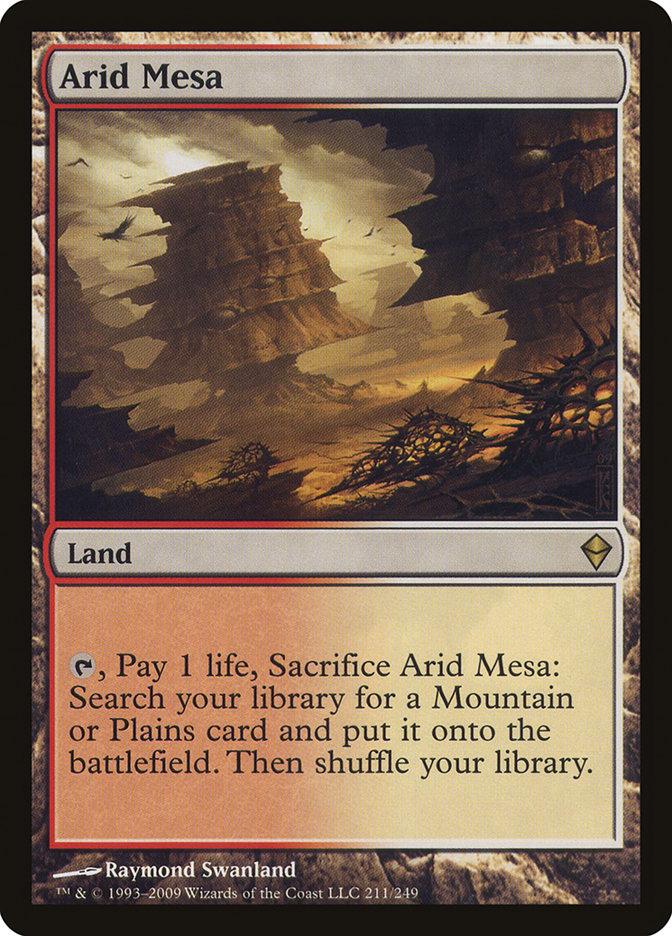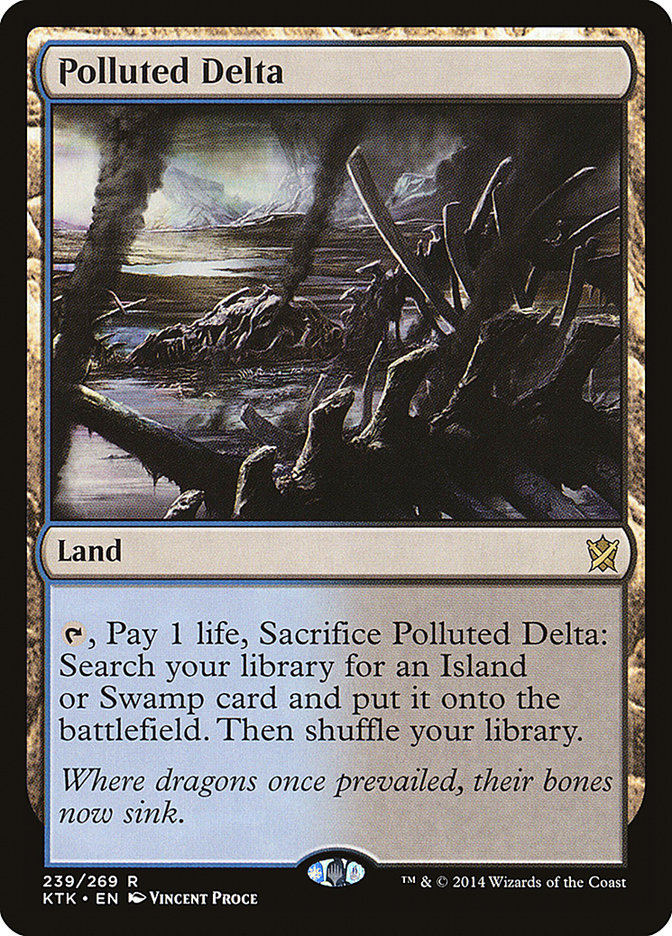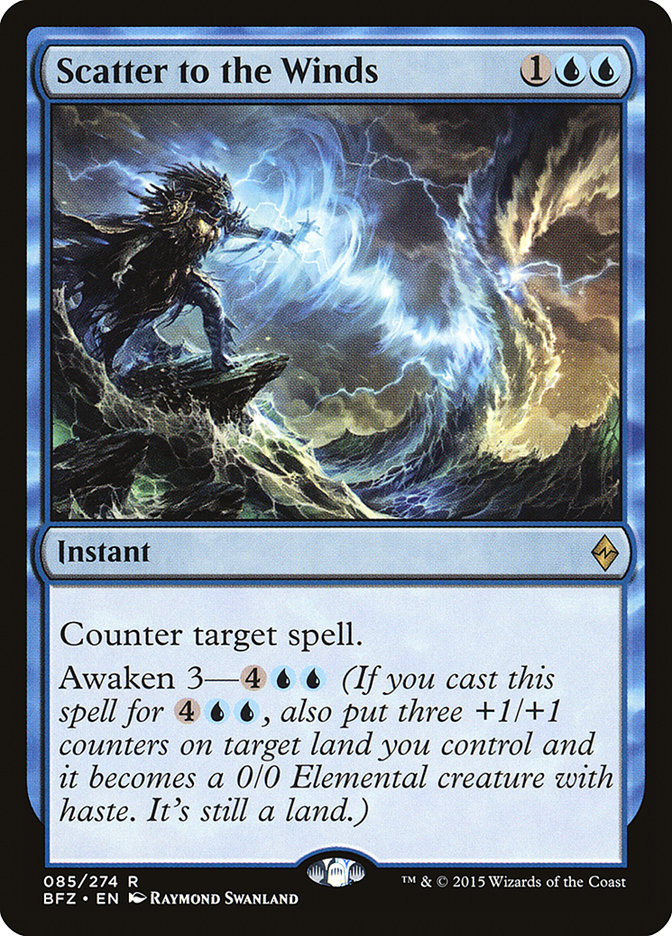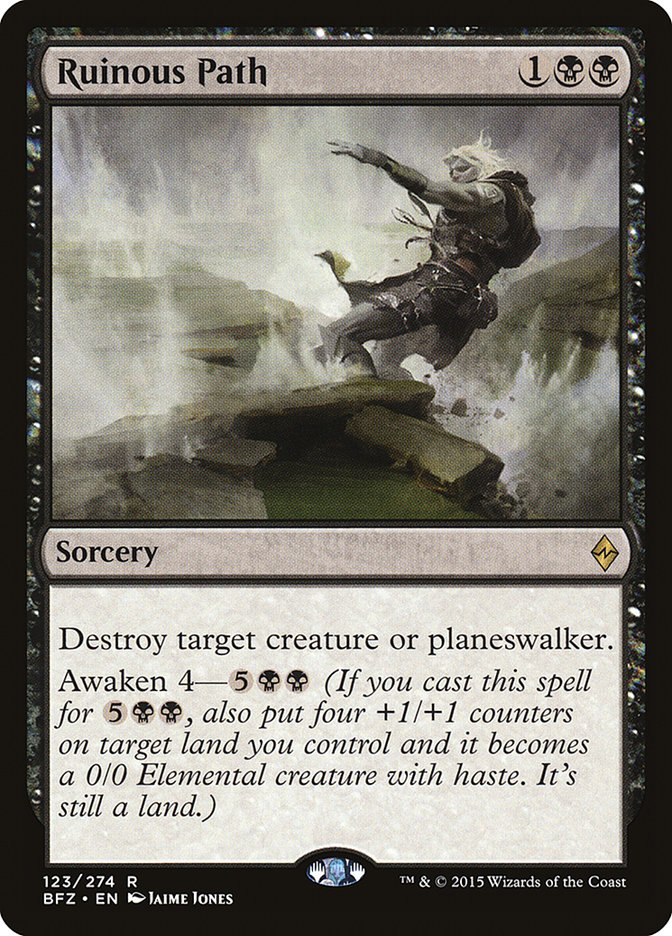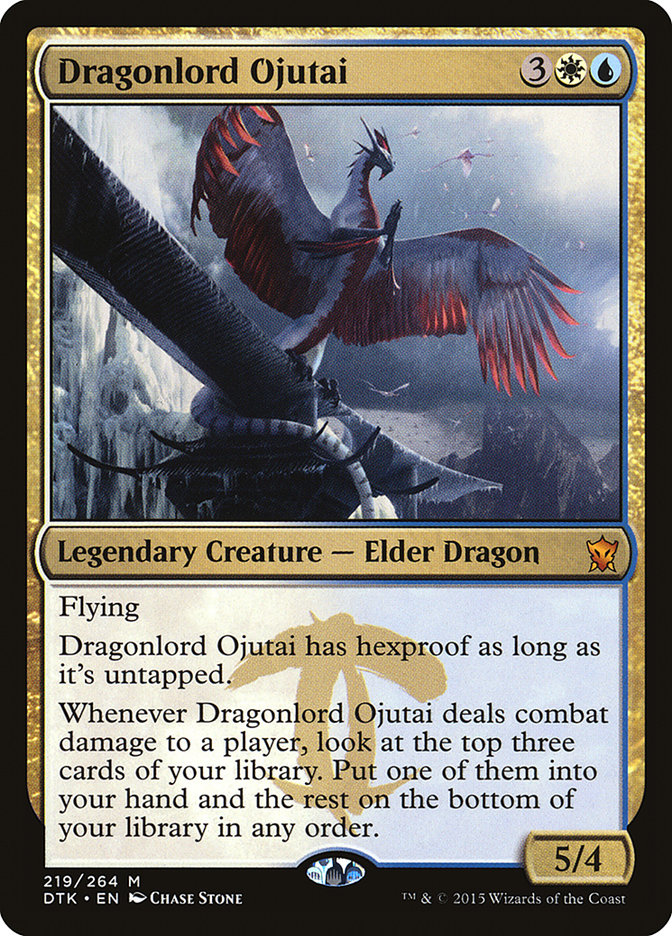The Season Four Invitational in Las Vegas is behind me and with it another near miss. I went on a seven-match winning streak, going 4-0 in Modern day one and winning the first three rounds of Standard day two before unintentionally drawing against Jeff Hoogland. My top 8 run kicked in with dreams of a sixth appearance and maybe even a win this time around. Esper in Standard was firing on all cylinders day two, my Modern deck was stealing wins with Blood Moon left and right, and I was playing at an elevated level in comparison to my day one jitters. I won my first round of Modern with a mulligan to five, Spell Snare your Tarmogoyf, and cast Blood Moon performance and proceeded to defeat Abzan in game 3 with a very good Delver of Secrets aggressive draw. I was pumped to say the least, and I only needed two more wins out of the last three rounds to stand amongst the top 8.
I lost to Infect the next round, defeated Harlan Firer piloting U/R Twin in round fifteen, and the win-and-in final round was upon me. I had to win to secure a top 8 position and ended up losing to Temur Twin to end my tournament in 17th place. Both decks were great for the midrange/control metagame, and my prediction of the decks being played still held true in my own personal matchup breakdown. Invitationals are invite only and offer a lot of money and prestige to the victor, so most people stray away from sleeving up mono-red knuckleheads in both formats. I played against red aggressive decks once in Standard and once in Modern, but saw midrange round after round beyond that. I beat three four- or five-color Abzan decks in a row day two to set me up for that dream run, and my day one wasn’t much different as far as opponent’s archetypes were concerned. These tournaments have historically been easy for me to predict, and I don’t see that changing in the near future. This comforts me even after a tough, heartbreaking loss, because I know with the power of control I’ll be able to get back to the top sooner rather than later.
Since both decks performed in a way that makes me very proud, I wouldn’t change either drastically. Esper Control has undergone one change with an additional Murderous Cut to the sideboard replacing the Ultimate Price to give us more answers to problematic Shambling Vents. I should have lost to B/W Control, but I was saved by the clock. It was caused by Shambling Vents, and having only one way to kill a land on their turn is simply not enough. Having additional Murderous Cuts is not a bad thing and is an easy substitution for Ultimate Price, which can be too narrow at times.
The U/R Delver deck had just one change as well, which was cutting the Arid Mesa for a Polluted Delta. There is no reason to have an Arid Mesa in the deck, and it was just tossed in there as a ninth fetchland, but it should, of course, be a blue one. These are the two decks I’ll be piloting until the Pro Tour and potential banning/unbanning that is coming with it.
How to Build a Control Deck
I wrote an article for StarCityGames in 2010 that attempted to tackle this subject, but it was very brief and vague. The first emotion that popped in my head when I googled that old article was shock….shock that I have been writing content for so many years. I actually don’t remember when I started working for SCG, but I do have fond memories of driving to Roanoke for a Grand Prix Trial and handing Pete and Ben some cash to play the game at a competitive level for the first time. I know soon after that the online sales boomed, the store created a tournament series, and I was asked by a now pseudo-famous sportswriter to create some controversial content starting with my dislike for the card Preordain. I was a different, inexperienced mage then, and now I can write a “three easy steps!” article with a bit more substance to give you all the means to create a control masterpiece.
Creatures (5)
Planeswalkers (4)
Lands (27)
Spells (24)

Step 1 – Create an organized list of every card legal in the format and then rate their effectiveness.
This is the most vital and time-consuming step in the process. If you want to have the best control deck in the room, then you have to put the effort in. There are so many cards out there that can be utilized as a maindeck or sideboard card, so generating this list is vital to making sure you’re not missing anything. I organize this list by using Excel columns with the following headings:
Removal
Disruption
Card Advantage
Win Conditions
Mana Fixing
Miscellaneous
These categories help you when you’re ready to crunch the numbers and break down how many of each card type you need to accomplish your goal. This goal, road to victory, differs in each metagame, therefore, the numbers are always changing. There was a time where a good control deck only needed six to seven removal spells because of how strong countermagic and card draw was. The scales shift up or down with the amount of removal necessary based on the power level of the creatures and the spells that deal with them. An example would be Ruinous Path. Ruinous Path is not Hero’s Downfall, but it is necessary to incorporate into any black control deck. Hero’s Downfall was an auto four-of because of how powerful the spell was. Instant speed removal is just leaps and bounds better, but our sorcery version is still very usable. I use two Ruinous Path now in Esper Control, which frees up room for other cards. Using the same theory of power level for other categories in the current Standard, Scatter to the Winds is another one up for discussion. I disagree with most on the power of this card and think it’s better than Dissolve if both were to exist at the same time in the same format, but we can all agree that neither of those are very good counterspells in the grand scheme of things. This is the reason why two or three of these are fine, but we don’t require a full complement in any current day Standard deck.
When dealing with a limited pool of powerful removal and disruption, the curve becomes the most important factor. The best removal spell in Standard is arguably Utter End because of its ability to deal with the vast majority of problematic threats. It kills planeswalkers, creatures, and prevents graveyard abilities. The four mana cost keeps it in check and forces us to look for spells early on to keep the board clear. Control decks must have a two-mana removal spell somewhere in the maindeck to keep us safe from early pressure. I tried to use four Clash of Wills when the new Standard started, but realized how weak the counterspell really was after further testing. Luckily, Silkwrap has given us the means to survive until the later turns. Silkwrap deals with any early creature effectively as well as permanently destroys Hangerback Walker for a very low cost. Normally this would be a three or four of in the maindeck; however, there is a planeswalker that monopolizes that particular spot and always gets dibs on being cast first. Jace, Vryn’s Prodigy is an interesting card in the control building breakdown and falls under miscellaneous. It can promote card advantage, demand an immediate response, and/or provide removal as early as turn 4.
My Standard deck at #SCGINVI had nine one- or two-drops, which is the moral of the story regarding step one. Every control deck I’ve ever built shoots for the 8-10 interactive spells early on to set up for our big haymakers to follow. Spells are simply not powerful enough anymore to sit around with cantrips, cast Supreme Verdict, and use a Sphinx’s Revelation to bury an opponent. We have to work hard to have a clear board and that sometimes requires cards like Silkwrap and Fathom Feeder to achieve that goal. One of my feature matches gave great insight on the power of Fathom Feeder against Abzan. It killed two Shambling Vents and a Warden of the First Tree with a little help from Ojutai’s Command. Having two-drops that multipurpose as lategame bombs is a bonus that control decks can use to gain great advantage. None of us are depressed with a lategame Jace, Vryn’s Prodigy transformation, Fathom Feeder with five mana open, or tying a 4/4 Hangerback Walker down with silk. Those are some of the scenarios that entice me to choose these spells over cards like Ultimate Price, Gideon’s Reproach, Clash of Wills, Disdainful Stroke, and other cards that have very narrow use in comparison.
The other categories (win conditions and card advantage) usually boil down to playing the best we have available. When the win condition was Aetherling, you just took it and threw it in whatever control deck you built without much controversy. There were formats before that where the win conditions were even more apparent, and in those times, control was very easy to win with. In today’s control, the task becomes much more difficult. We have a lot of planeswalkers that are on-color for control decks of all varities, powerful creatures that can be borrowed from the midrange decks, and Dragons that can be used exclusively. Variety is not always a good thing for choosing win conditions. I’d rather have one very powerful and obvious option than a bunch of medium power leveled options that sometimes can’t get the job done. Squadron Hawk, Aetherling, the Titans, and even Decree of Justice got the job done. With planeswalkers and Dragons, the task becomes more time consuming and difficult. The choosing of win conditions comes down to personal preference in today’s Standard. I still am on board with the planeswalkers, but Dragons are just as powerful, if not more. I’ll leave that one up to you all.
Step 2 – The Numbers
Many, many years ago I had this list I’d follow when building a control deck. I would try to play an exact number of board sweepers, spot removal spells, counterspells, etc. that was determined before I knew the metagame or even all the cards that were released. I just enjoyed having a system and even though it wasn’t perfect, it gave me comfort when all the pieces came together. The reality is that the numbers for each slot change with the power level of the cards and the metagame being faced; it’s constantly changing. The power level of card draw is very high right now and for that reason we use four Dig Through Time in every control deck no matter what. Those who play less Dig Through Times in their control decks are making a huge mistake because of how good the card is. Painful Truths is another spell that has entered the fray because of how good it is. Normally I’d stay away from Read the Bones and other card draw that taxed our life, but this is different. Three cards for three mana has virtually erased all mulligans prior to resolving the spell, can be used again with Jace, Vryn’s Prodigy, can have the life regained with an Ojutai’s Command, and it simply works well in this control shell. Only one can be played in the main, which was not discovered from testing. Only playing one Painful Truths is part of step two of building a control deck. Understanding the numbers and how many of each card should get played is an important part of building a control deck. There is no way you can play four Painful Truths in Esper Control, but in an aggressive deck it would be no problem. There is no way we can play four Gideon, Ally of Zendikar because of how much card draw we use and having that many copies would be ineffective. These numbers are easy to understand as you sit down and craft a control deck together. Step one and two combine to give us a curve to look at. All control decks operate on 26-27 lands, so that gives us 33 cards to work with. I said I like to have 8-10 earlygame interaction spells, so that gives us 25-27 spells to work with. The rest of the curve is less important in control decks than it is in all other archetypes because we aren’t upset with casting a turn 2 Silkwrap and turn 3 Jace, Vryn’s Prodigy. All of the cards that we incorporate into our new deck have power early on and later. The biggest tip I can give for those crafting their first control deck is to not shy away from one-ofs. Because of Dig Through Time, Jace, Vryn’s Prodigy, Painful Truths, and Ojutai’s Command, control players are able to cantrip their way into specific answers. That gives us incentive to play less of each card in order to have a variety of spells to deal with threats across the board. The numbers step is more of determining a curve that isn’t top-heavy, has a variety of answers, has an ample earlygame to deal with the heavy hitters of the metagame, and finally a minimum amount of win conditions.
Win conditions cannot be a huge portion of the deck. This is one of the small reasons why I’m on the planeswalker plan over the Dragons plan today. You have to play at least six Dragons to effectively use Silumgar’s Scorn compared to the four planeswalkers shown above. It is true that games end faster if you’re using more win conditions, but that comes with a price. Space is tough to come by in control decks because of the amount of land you must run and the slots that card draw take up. If you can win with a bare amount of win conditions, then you’ll experience victory more often with those precious slots being used for answers.
Step 3 – The Sideboard
The sideboard never gets love from writers or deckbuilders, but it is essential for control players. Everyone has a sideboard, from Storm combo decks to Atarka Red, but we must have access to our lifegain critters to have a shot against the aggressive decks. I always start my sideboard building in Standard and Modern with four cards that are the best against red aggro. In today’s Standard, we have Arashin Cleric and a fourth Ojutai’s Command, which has propelled me above this menace time after time. 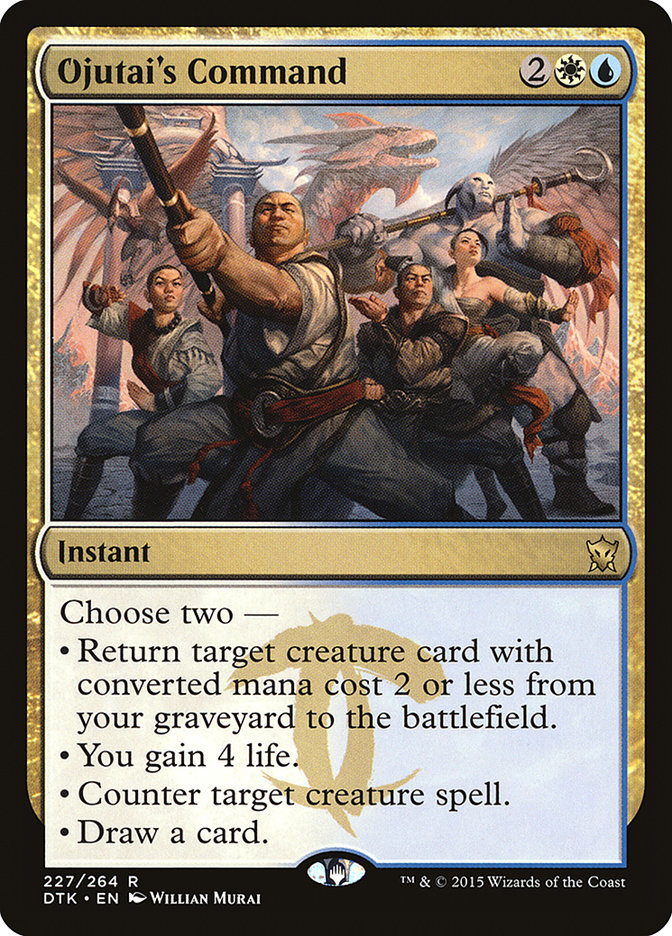 It feels good to beat Atarka/Landfall decks in Standard and the only sacrifice I had to make was four slots in the sideboard. The first sideboard you build will likely be terrible. My sideboards always are and need constant revision, due to the shifting metagame, cards that were not as good as I anticipated, and surprisingly bad matchups. I added two Infinite Obliteration in to defeat Ulamog, the Ceaseless Hunger and it worked wonders. The Tasigur, the Golden Fang is a big body against red decks and matchups where I don’t have to worry about cheap removal nailing him. Each card has a specific job to do and secondary jobs that they are decent at accomplishing. Finding sideboard cards that can work double duty against multiple matchups are a huge bonus but not necessary. You don’t want to get into a situation where you have way too many cards to board in, not out, and vice versa. My sideboard building is done in a very similar way to the deckbuilding itself. I use Microsoft Excel, type each matchup that I plan on facing at some point, and create two columns to the right. The first column, I’ll type cards that I want to bring out against that particular deck, and the second column is all the cards that I hypothetically would want against them. Once I finish this exercise, I craft a sideboard from the notes I created. The first one of the season is always pretty rough because it turns out I don’t need any help versus Abzan, but I need a ton against Esper Tokens. The metagame stabilizes, you hit the list again, and the final product is a powerful 75 that will make you proud.
It feels good to beat Atarka/Landfall decks in Standard and the only sacrifice I had to make was four slots in the sideboard. The first sideboard you build will likely be terrible. My sideboards always are and need constant revision, due to the shifting metagame, cards that were not as good as I anticipated, and surprisingly bad matchups. I added two Infinite Obliteration in to defeat Ulamog, the Ceaseless Hunger and it worked wonders. The Tasigur, the Golden Fang is a big body against red decks and matchups where I don’t have to worry about cheap removal nailing him. Each card has a specific job to do and secondary jobs that they are decent at accomplishing. Finding sideboard cards that can work double duty against multiple matchups are a huge bonus but not necessary. You don’t want to get into a situation where you have way too many cards to board in, not out, and vice versa. My sideboard building is done in a very similar way to the deckbuilding itself. I use Microsoft Excel, type each matchup that I plan on facing at some point, and create two columns to the right. The first column, I’ll type cards that I want to bring out against that particular deck, and the second column is all the cards that I hypothetically would want against them. Once I finish this exercise, I craft a sideboard from the notes I created. The first one of the season is always pretty rough because it turns out I don’t need any help versus Abzan, but I need a ton against Esper Tokens. The metagame stabilizes, you hit the list again, and the final product is a powerful 75 that will make you proud.
I hope that this guide can help you understand my thought process when creating a control deck and give you the tools to build your own. Good luck!

